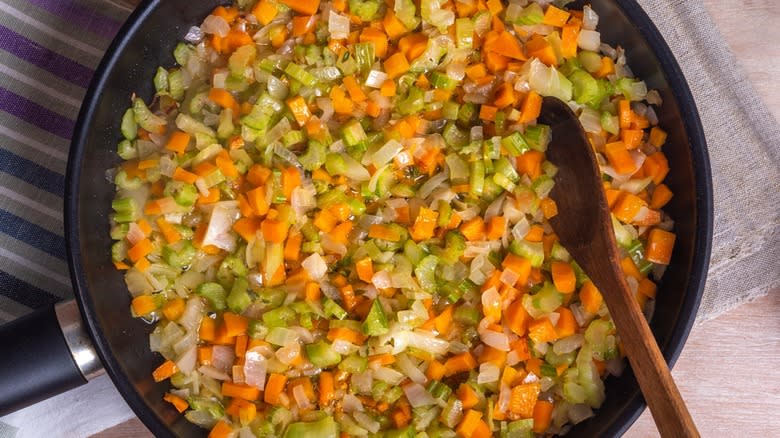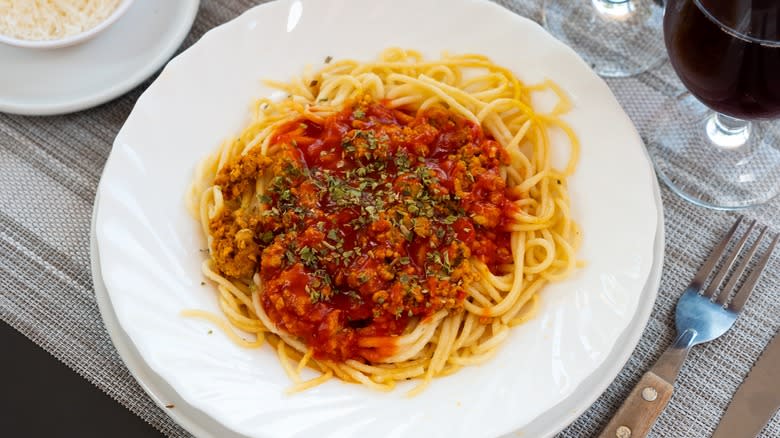Soffritto Is The Secret To More Complex Store-Bought Tomato Sauce

An aromatic sauté is at the foundation of many stews, sauces, and stir-fries around the globe. While you've probably heard of the French mirepoix or the Cajun holy trinity, Italian soffritto stands out in taste and texture, providing a burst of flavor that your store-bought tomato sauce needs.
We've already laid out what Italian soffritto is and how it distinguishes itself from the French variety with its ultra-thin paste-like dice and longer cooking period, resulting in a more caramelized and complex savory foundation. Meaning "slightly fried" in Italian, soffritto caramelizes diced onions, celery, and carrots in olive oil, instilling a much earthier and sweeter base than a butter-based mirepoix. It's a common foundation for many Italian dishes including risotto, minestrone, and a meaty ragù a la Bolognese.
In fact, many households make a giant batch of soffritto to use with the leftovers in a variety of meals for the coming week. While numerous store-bought pasta sauce brands provide a diverse array of flavors and consistencies, the bright acidity and umami-richness of stewed tomatoes are often the star of the show. A slightly sweet, earthy, and aromatic foundation is the perfect complement to the savory tartness of tomatoes. Plus, a soffritto will also bolster tomato sauce's texture with a thickness that'll melt in your mouth with each bite.
Read more: 15 Popular Pasta Sauce Brands Ranked
Tips For Pairing Soffritto And Tomato Sauce

While Spanish and Latin American sofrito recipes differ in ingredients from Italian soffritto, both flavor foundations call for a paste-like dice. The easiest way to achieve this texture is to throw carrots, celery, and onions into a food processor and blitz them until you've reached a paste. Then, you can add the mixture to a skillet with olive oil and reduce it for a minimum of 15 minutes. When the soffritto reaches a deeper caramelized hue, you can pour your favorite jar or can of tomato sauce over it, stirring to combine.
Many tomato sauces have proprietary blends of Italian seasonings and garlic, which a soffritto will surely complement. However, you can also sprinkle in dried herbs if you want to add more complexity. A dash of apple cider vinegar or a tablespoon of sugar will also deepen the notes of caramelization in the soffritto. When your tomato and soffritto are simmering, you can even add freshly drained pasta for a restaurant-worthy upgrade to a simple dish of pasta pomodoro.
While the soffritto will effectively thicken tomato sauce, you can also add a portion of reserved pasta water to tie the dish together. And a pour of heavy cream will cut through the sweetness and acidity of tomato sauce and soffritto for a more decadent flavor. Your soffritto tomato sauce will also make for a much tastier base for stewed eggplant, ground meat, or as an addition to lasagna.
Read the original article on Tasting Table


